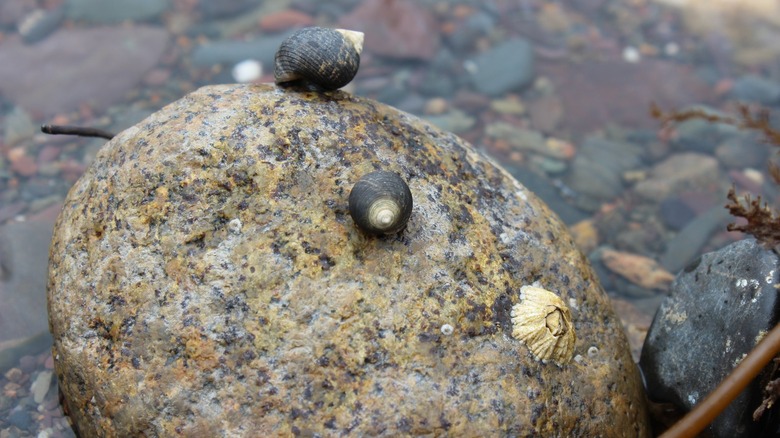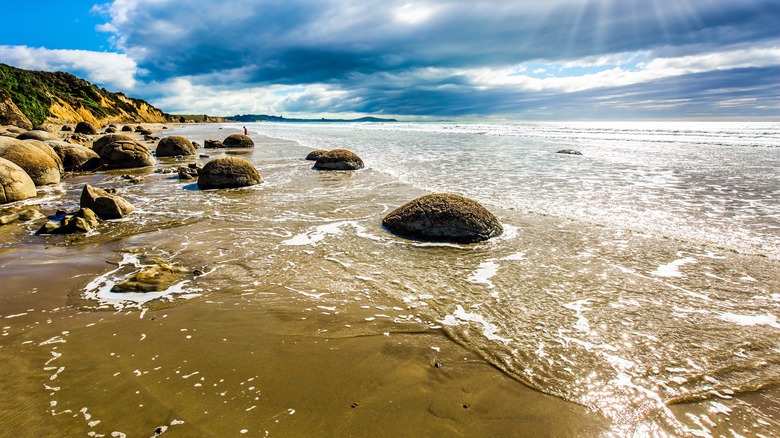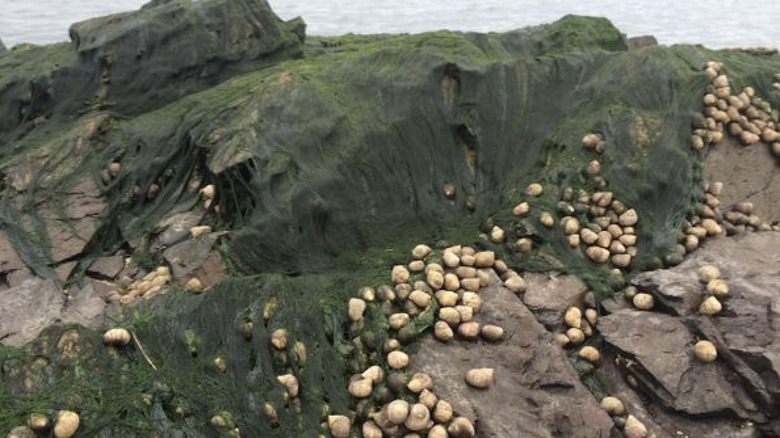What Is A Periwinkle And How Do You Eat One?
The word periwinkle can mean different things to different people. To some, it's the ground cover plant that's just as pretty as it is invasive. To others, it's a color somewhere between purple and blue. For seafood lovers, it's a small, edible gastropod known for its subtle sweetness and meaty texture.
Much like sea snails, periwinkles (which sometimes go by the adorable nickname "winkles" and, like the flower, are considered invasive) are protected by grayish spiral shells and live in oceans across the globe. As a result, they find their way into all sorts of cuisines. You could steam them for a few minutes and toss them in melted butter and garlic for a version of French escargot; you could boil them in salted water (or even seawater) and eat them au natural; or you could make like Canadian chef and author Martin Picard and cook them Cantonese-style with black bean sauce. Whichever preparation method you choose, you'll need to secure your haul first.
Coastal critters
It's not hard to find periwinkles in the sea, but you need to know where to look. You can sometimes spot the shore-dwellers near mud flats, but you'll more likely see them clinging to rocks and other surfaces the tide brushes up against. According to a National Center for Biotechnology Information study, they're excellent climbers. The most ubiquitous species of periwinkle is concentrated around northern European shorelines, but the mollusk has since been introduced to many other parts of the world, including New England and elsewhere along the northeastern Atlantic coastline.
When you come across a rock that is covered in winkles, simply pluck the largest ones from their perch and put them in whatever open container you have on hand. And don't worry about taking too many — since they're invasive, there's no current risk of threatening the species by harvesting a dozen or so for your dinner. If you're lucky, you might even find some mussels nearby. Of course, if you're not up for harvesting winkles on your own, you could always try your luck at a local fish shop.
Straight from the shell
Let's say you're hanging out with a bunch of coastal Mainers, and you come across a glut of periwinkles chilling on some seaside rocks. After cooking them, this lot will likely want to eat them straight from their shells. To do so like a pro, you'll want to secure some sort of pointy object, such as a toothpick, to both pluck off the "eye" at the shell opening and to release the meat from the small circular bit of shell it's stuck to.
If you're having trouble with the toothpick, you can also use your mouth to coax the spiraled gastropod from its shell into your belly. If you opt for this method, you'll also get a micro-shot of the periwinkle's sweet ocean juices. Think of it like sucking crab meat from a claw, only with slightly less effort and, some might say, an even higher reward.


